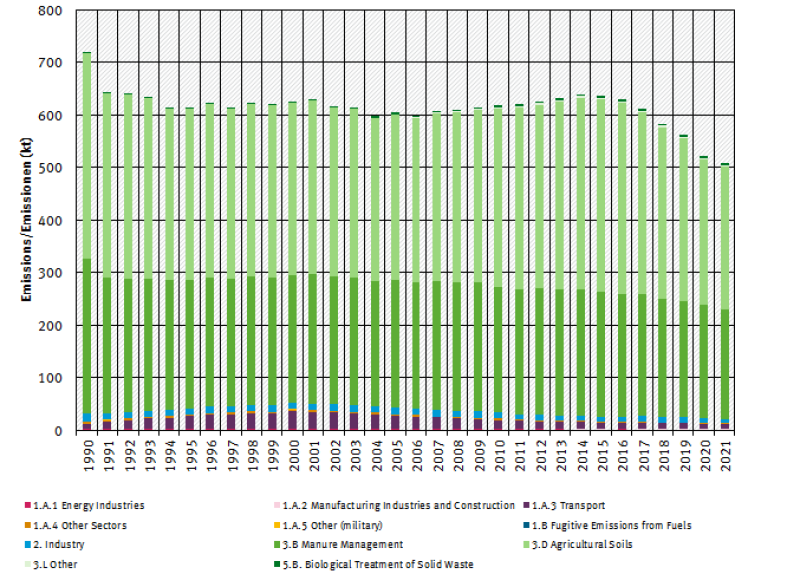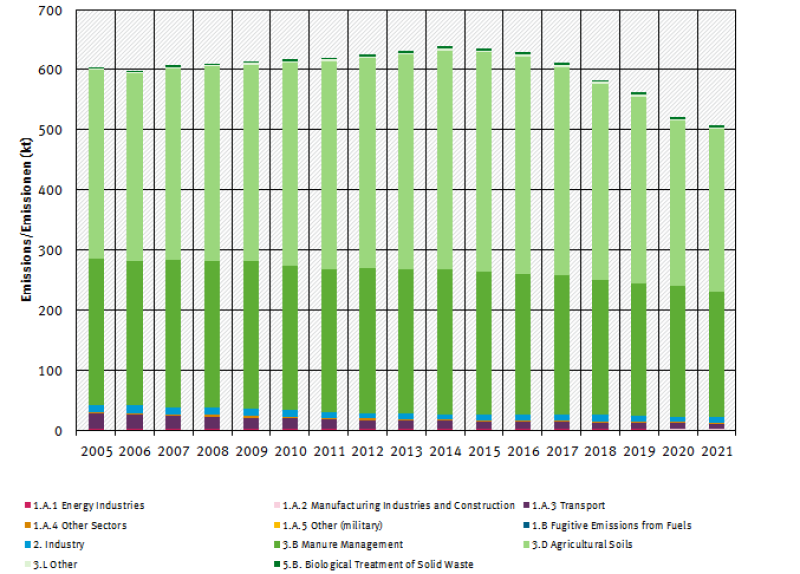Table of Contents
Explanation of Key Trends - Ammonia
Obligations
Germany has made a commitment under the Gothenburg Protocol to reduce ammonia emissions. Since 2010, it is no longer permissible to exceed a National Emission Ceiling of 550 kt NH3 for Germany as whole. The revised Gothenburg Protocol and the revised NEC Directive both define emission reduction targets relative to a 2005 base year, mandating 5% (2020) and 29% (2030) reductions respectively.
While Germany's compliance with these obligations is not discussed here, further information on this subject can be found in Chapter 9 - Projections and Chapter 11 - Adjustments and Emission Ceiling Exceedance.
Main drivers
The Main Drivers for NH3 emissions are agricultural emissions from Manure Management (NFR 4.B) with 43% of total 1990 emissions and a 30% reduction between 1990-2021 and Agricultural Soils (NFR 4.D) with even 53% of total 1990 emissions and a 31% decrease.
The overall emission trend follows the agricultural emissions closely with a total reduction of 29% since 1990.
The decrease of NH3 emission in the year 1991 is due to a reduced livestock population that followed after the German reunification, while no explicit trend is discernible for the years up to 2016. Between 2016 and 2021 the emissions are dropping every year adding up to a 15% drop. Here, emissions dropped by 9.7% between 2019 and 2020, an decrease only topped by the reduction between 1990 and 1991 (minus 11%).
Table: Ammonia emissions 1990-2021, in kilotonnes [kt]


